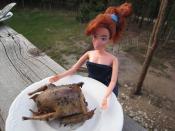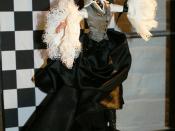Mattel/Barbie Marketing Analysis � PAGE \* MERGEFORMAT �10�
Mattel/Barbie Marketing Analysis Paper
History of Mattel / Barbie
Barbie was launched in 1959 and became an instant hit. Today, sales of the dolls and merchandise total more than $1.5 billion U.S. annually, making Barbie the most successful branded toy in history. More than a billion dolls have been sold since 1959, with 2.5 dolls sold every second. Different versions of the doll have been introduced to reflect the world's diverse population. For example, Mattel has produced African-American Barbie dolls since 1968, the time of the civil rights movement, and has introduced Hispanic and Asian dolls as well. Themed dolls were introduced that changed with the times -- from stewardess, fashion model, nurse, and astronaut.
Trends
There have also been some approaches by other companies to promote Barbie look-alikes that are modeled to promote healthy body image. Ruby is a doll with a more realistic body size that is featured in ads and posters.
She was created in order to promote positive body image and has been featured in numerous ads and posters. There are also Emme dolls which are also geared towards promoting self-esteem and healthy images of bodies. The Emme doll was modeled after a real-life plus-size model. When asked about the new dolls, Mattel only commented that "[their] legal department is looking into it from a trademark perspective" and showed no fear of the new competition (Jervis).
Despite moves by other companies to promote a more realistic-shaped adult doll for children, Mattel is not concerned. Barbie's name, brand, and lifestyle have become so engrained in American public's minds and have caused clear distinctions in opinions over the doll. She has grown to include more than just a doll. There are Hallmark birthday cards, Christmas ornaments, Barbie clothing...


